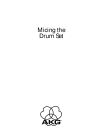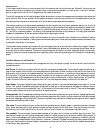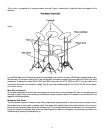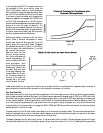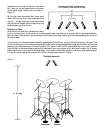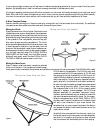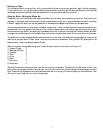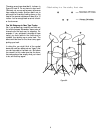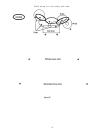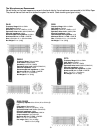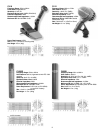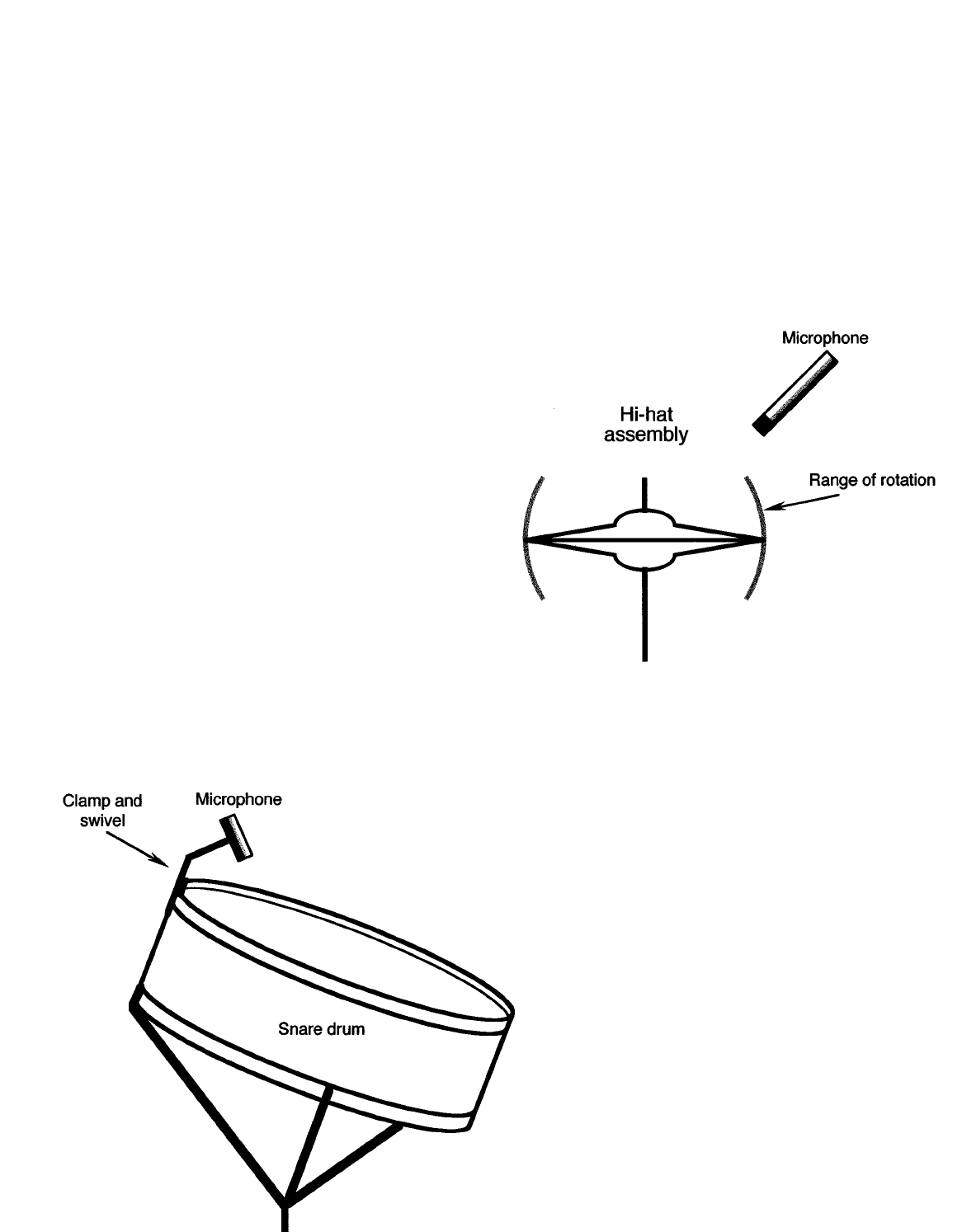
If you’re going straight to stereo you will also have to make some processing decisions for the drum tracks. Avoid any rever-
beration; you probably won’t need it since there is enough overhand in the basic sound itself.
A final point regarding recording levels: Mics that are close-in on a drum set will usually be sampling very high level sound
fields. With most of the newer microphones you won’t have to use the internal microphone pad, but you should carefully
trim down the console mic input sections, just to make sure that you still have sufficient headroom at all times.
A More Complex Pickup:
Another common technique is to focus the pickup by micing both the hi-hat and snare drum individually. The additional
microphones are often added to provide more sonic choices during mixdown.
Micing the Hi-hat:
Figure 6 shows a view of the hi-hat set. Note that the two
cymbals have room to pivot slightly about their suspension
points, as indicated by the curved lines, and the mic must
be outside this range. Avoid placing the mic along the edge
of the cymbals in their rest position, since this may pro-
duce some strange sounding cancellations. The micro-
phone should be placed above the hi-hat set as shown, and
it should always be located on the side away from the
drummer. We recommend a small format condenser car-
dioid because of its ability to pick up fast transient respons-
es in the high frequency range. The C1000S, C391B or
C480 B-CK61 will work nicely. Any of the Blue Line car-
dioids will work nicely, as will the new C430 or C451 B.
The D550 or D660 can also be used on the hi-hat.
Micing the Snare Drum:
Figure 7 shows a small instrument microphone attached
to the rim of the drum. This microphone is small enough
that it goes virtually unnoticed by the drummer, and yet picks up the sound of the drum accurately. The AKG MicroMic model
C418 is ideal for this application. The C418 is a very small
condenser model with a 1% overload point at 131 dB, more
than enough for the job. Its sensitivity is 4 mV/Pa, so it will
need little further padding to prevent overloading the con-
sole’s input section. Its low frequency response has been
gently rolled off in the far-field so that close-in pickup will
be natural through the boosting of bass frequencies caused
by close micing (proximity effect). There is also a broad
high frequency boost in the 10 to 15 kHz range for added
presence in complex musical passages. The C418 was
designed specifically for percussion instrument micing.
However, some condensers may not be able to handle the
high sound pressures produced by drums. For this reason,
dynamic microphones such as the D440, D660 or D770
are often used. A second microphone on the bottom head
will add a new dimension to your snare sounds. But,
remember that you must reverse the phase of the bottom
mic because the bottom head travels outward as the top
head is driven inward.
As with all other mics used with the drum set, mount it on
the far side, away from the drummer, and make absolutely
sure that it is in a position so that there is never a chance
that the drummer will accidentally strike it while playing.
6
Figure 6
Figure 7
Micing the Hi-hat and Cymbals:
Micing the Snare Drum and Toms:



